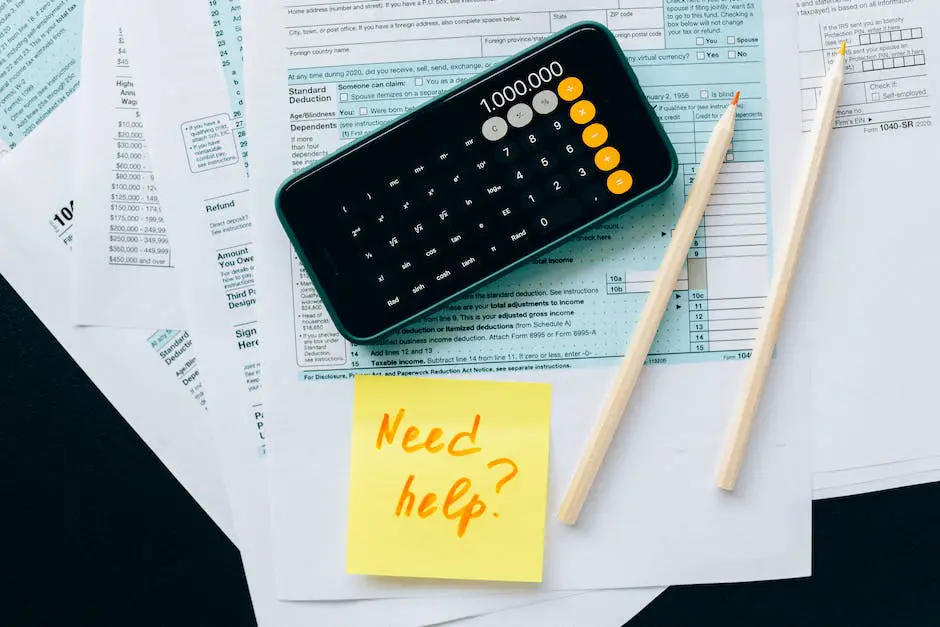Effective Ways to Reduce Your Electric Bill
We spend a significant amount of money on electricity bills, often without fully understanding why or how we can reduce these costs. Understanding your electric bill, including all its details from kilowatt-hour usage to peak hours charges, is the first step towards comprehending the impact of energy usage on our expenses. Additionally, recognizing the necessity and identifying the cost savings associated with using energy-efficient appliances could revolutionize our electricity consumption. Finally, embracing various energy conservation strategies, such as unplugging when not in use, optimizing natural light usage, and the prudent use of heating and cooling systems, are practical steps that could lead to consistent cost reduction over time.
Understanding your electric bill
Unveiling the Key Components of Your Electric Bill
If you’ve ever found yourself scratching your head or racking your brains, trying to decipher what exactly the charges on your monthly electric bill mean, you’re not alone. Many people find themselves in a haze of confusion every time they receive their bills. The bottom line is clear – you owe a set amount – but the distinct elements that make up that figure often remain a mystery. Today, it’s time to clear the fog. We’ll delve deep into the specific components of your electric bill so that the next time it lands in your mailbox, there won’t be any guesswork involved. You’ll know exactly what each dollar you pay for.
To start with, let’s look at the Energy Usage Charge. This is the main crux of the bill, representing the cost of the actual electrical energy you’ve consumed in the billing period. It is often measured in kilowatt-hours (kWh), unit denoting your home or business’s energy consumption over time. Your utility company sets an energy rate, which then multiplies by your usage to calculate this particular fee.
The second most salient feature of your bill is the Delivery Charges. Now, generating electricity is only half of the story. Getting that energy from the power plant to your property, safe and sound, is the other half. The infrastructure involved in this task incurs considerable costs, including the maintenance of transmission and distribution networks. These costs are reflected in your delivery charges. This sort of charge often gets split into two parts – a ‘Fixed Delivery Charge’ which you pay regardless of usage and, a ‘Variable Delivery Charge’ based on your actual power usage.
Next up are the Supply Charges, also known as Generation Charges. These costs account for the process of generating electricity – think power plants and their operations. Essentially, they represent the price you pay for obtaining electricity from its original source, be that a coal-fired plant, a nuclear reactor, or increasingly, renewable sources such as wind and solar farms.
Then there are the various Taxes and other charges, mandated by the state or local authorities, further divided into Utility Taxes, Municipal Taxes, Franchise Fees, and the Renewable Energy Surcharge, to name a few. These taxes vary based on your location and the regulations in your region.
Last but not least, the bill presents with assorted Fees and Adjustments, encompassing elements like late payment fees, meter reading fees, and adjustments for fuel costs, demand response programs, and more.
Knowing what each part of your electric bill signifies is the first step toward mastering your energy usage. It enables thoughtful consumption, smart budgeting, and can potentially unlock substantial cost savings. With this knowledge in your wallet, you’re equipped to make informed decisions about your energy use, savings, and even shift your habits if necessary.
The intriguing world of electric bills might have been a mystery until now, but no more. The fog has lifted, and in its place, the path to energy mastery is in clear sight. Welcome to an enlightened world.

Energy efficient appliances
The Hidden Power of Energy-Efficient Appliances: Cutting Your Electric Bill
In a world where businesses are going green and savvy consumers are tightening their belts and their energy habits, energy-efficient appliances have become a key player in carving out significant savings in electricity costs. Whether you’re a business executive managing expenses or a budget-conscious homeowner, understanding the benefits of energy-efficient appliances can help reduce your electric bill, also making a positive impact on environmental sustainability.
To begin, let’s examine what makes an appliance energy efficient. Energy-efficient appliances are designed to consume less energy, achieving the same or better performance than their conventional counterparts. They are built with advanced technologies that reduce electricity usage, thereby reducing operational costs. This translates to less energy drawn from the power grid, leading to reduced electricity bills.
A powerful anecdotal metric is of particular interest: the Environmental Protection Agency (EPA) estimates that if every appliance purchased in the U.S. was ENERGY STAR-rated, customers would save roughly $15 billion in annual energy costs. These appliances, from dishwashers to HVAC systems, are equipped with cutting-edge technology designed to conserve energy and save you precious money in the long run.
Energy-efficient appliances also stand out for their long-term cost-saving approach. They may incur a higher upfront cost, but the long-term savings in energy use quickly outpace the initial investment. A business strategist would easily recognize this tactic as a return on investment strategy: invest more now to enjoy significant savings later. This applies to both small businesses looking to cut operational expenses and homeowners seeking energy-cost savings.
To gain the savings offered by these appliances, you will need to be intentional during the purchasing process. Start by examining the Energy Guide label that the Federal Trade Commission (FTC) requires on all new appliances. This handy label will offer a wealth of information, including estimated energy consumption and operating cost comparisons with other models. This information can help you make an informed decision about the long-term energy and monetary savings you can anticipate.
The market is ripe with opportunities for energy savings. Innovatively designed refrigerators, for instance, use high-efficiency compressors, improved insulation, and more precise temperature and defrost mechanisms to save energy. Energy-efficient dishwashers use sensors to determine optimal water and energy levels, while modern washing machines use less water, power, and detergent.
Many utility companies also offer rebates for customers willing to upgrade to ENERGY STAR or energy-efficient appliances, providing further incentive to make the switch. Remember, every small step in energy efficiency can result in substantial savings. In an era where efficiency is celebrated and environmental sustainability is rewarded, it’s time to bring energy-efficient appliances on board and start enjoying a lower electric bill.
Expert business strategists recognize energy-efficient appliances as integral assets in cost reduction and sustainability efforts, making them an absolute must-have in a smart business model or a financially-sound household. Move past your electric bill’s irrelevant fees and adjustments, and control your energy costs with savvy appliance choices. Now, that’s a strategy worth investing in.

Conservation strategies
Beyond Utility Bills: Uncovering Energy Conservation Possibilities at Home
When it comes to home energy conservation, many people tend to focus heavily on elements like energy usage charges, supply charges, delivery charges, and additional taxes or fees. Yes, understanding these elements is crucial. However, there’s more to effective energy conservation strategies than just managing bills. One of these overlooked areas includes energy-efficient appliances.
An energy-efficient appliance isn’t just another home commodity. It’s a power-packed tool brimming with cost-saving and eco-friendly potentials. But what exactly makes an appliance energy efficient? In simple terms, these appliances use less electricity to perform the same level of service compared to traditional appliances, making them a practical and cost-effective choice.
Energy-efficient appliances aren’t just about reduced electricity costs, they provide far-reaching benefits that impact the environment on a wider scale. By functioning optimally with less energy, they help reduce the demand for electricity from power plants, subsequently lowering greenhouse gas emissions, hence cushioning our planet.
Everyone loves long-term savings. And this is where energy-efficient appliances come into play. While the initial cost may seem high, the longevity and efficiency of these appliances provide substantial savings over time, essentially paying for themselves in some instances.
To effectively evaluate and understand the efficiency level of an appliance, understanding the ‘Energy Guide’ label is pivotal. These labels provide a clear snapshot of the estimated annual energy consumption, operating costs, and efficiency ratings, making it a lot easier to compare appliances.
Take, for example, energy-efficient refrigerators. These appliances utilize advanced technologies like improved insulation and high-efficiency compressors to reduce the amount of energy used. Similarly, appliances such as advanced power strips or light-emitting diode (LED) bulbs use less energy, giving you more control over your energy consumption.
Interestingly, many utility companies offer rebates or incentives for purchasing energy-efficient appliances, providing a financial ease for homeowners. Therefore, before you purchase your next appliance, make sure to inquire about any potential energy-efficient rebates available.
Considering all these, energy-efficient appliances no doubt have a pivotal role in our overall cost reduction and sustainability efforts. What seemed like a minor home improvement feature, when strategically applied, can contribute significantly to our energy conservation strategies.
Undeniably, it’s no longer about just monitoring electricity bills. It’s about understanding and exploiting the vast potentials that energy-efficient appliances offer, which propels us towards a path of efficient home energy conservation, cost savings, and sustainable living. Energy efficiency is not just a trend. It’s a necessity, a responsibility towards ourselves, our pockets, and our planet. Let’s move beyond bills and embrace these incredible opportunities.

Photo by geetanjalkhanna on Unsplash
Modern life hinges on electricity, but that doesn’t mean you can’t keep a firm grip on what you spend. By familiarizing yourself with your electric bill, investing in energy-efficient appliances, and employing effective conservation strategies, you can significantly trim your utility costs. It’s not just about saving money, however. These methods also constitute an effort to be more eco-conscious, reducing our environmental footprint. Through these relatively small changes in our everyday patterns, we can truly make a difference, not only in our wallets but also in the world we live in. It all starts with knowledge and understanding, the first steps on the path to a greener, less costly lifestyle.
